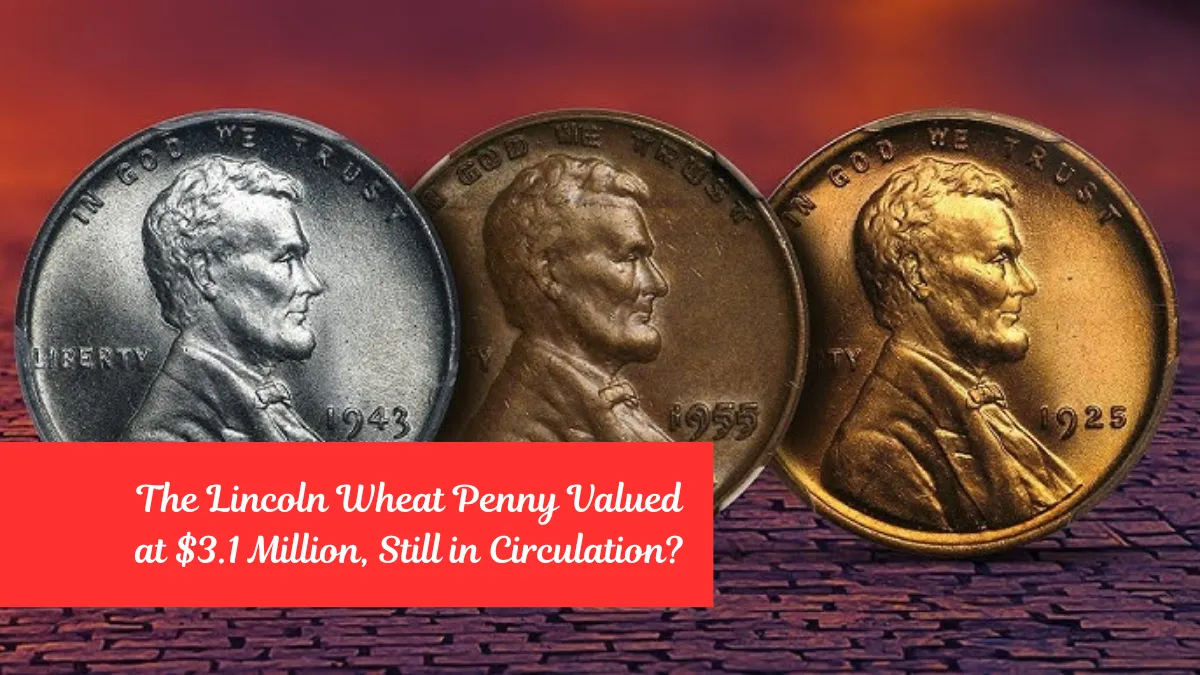The idea of finding a penny worth millions in your change jar seems like a fantasy—but in the world of rare coins, it’s not entirely impossible. One specific coin, the Lincoln Wheat Penny, has made headlines for its astonishing estimated value of $3.1 million. Could this rare coin still be floating around in everyday circulation? Let’s explore the facts and separate the truth from the myth.
A Brief History of the Lincoln Wheat Penny
The Lincoln Wheat Penny was first minted in 1909 to honor the 100th anniversary of Abraham Lincoln’s birth. It remained in production until 1958 and is easily recognizable by the two wheat stalks curving along the reverse side. Over the decades, billions were minted—but a handful of them stand out due to errors, low mintages, or unique historical significance.
What Makes a Penny Worth Millions?
Not all Lincoln Wheat Pennies are created equal. Most are worth only a few cents or a couple of dollars to collectors. But certain rare versions can command jaw-dropping prices—up to $3.1 million, according to reports in the numismatic community. These high-value coins are typically:
- Minting errors (such as being struck on the wrong metal)
- Extremely low mintage
- Pristine condition or “proof” quality
- Historic production circumstances
Let’s look at the penny that reportedly reached the $3.1 million mark.
The 1943 Bronze Lincoln Penny – The Star of the Show
During World War II, copper was needed for ammunition, so the U.S. Mint switched to zinc-coated steel for pennies. However, a few leftover bronze planchets (used in 1942) were accidentally fed into the presses in 1943. These bronze 1943 Lincoln Pennies are incredibly rare—fewer than 20 are known to exist.
What makes the 1943 Bronze Penny so desirable is its dramatic origin and rarity. One specimen in near-perfect condition was rumored to have sold privately for as much as $3.1 million, making it one of the most expensive coins in U.S. history.
Could It Really Still Be in Circulation?
Technically, yes—though the chances are slim. It’s entirely possible that one of these valuable coins could still be sitting in a forgotten coin jar, a grandparent’s drawer, or mixed into rolls of pennies at the bank. After all, they look almost like any other penny at first glance.
Most people won’t notice anything unusual about a 1943 penny. But here’s the catch: if it’s made of copper or bronze and not steel, it could be worth a fortune. A quick test with a magnet can help—steel cents stick, bronze ones don’t.
What to Look For
If you’re hoping to discover a rare Lincoln Wheat Penny worth thousands—or millions—here’s what to watch for:
- Date: Look for 1943 pennies, especially if they appear copper-colored.
- Weight: Bronze pennies weigh about 3.11 grams; steel pennies weigh 2.7 grams.
- Magnetic Test: Steel pennies are magnetic; bronze ones are not.
- Unusual Errors: Double strikes, off-center prints, or unusual textures may signal a rare coin.
If you think you’ve found one, don’t clean it! Cleaning a rare coin can dramatically reduce its value. Instead, take it to a certified coin grading service or a reputable coin dealer for authentication.
Final Thoughts
The Lincoln Wheat Penny valued at $3.1 million is real, but extremely rare. While the odds of finding one in circulation are tiny, it’s not impossible. That’s what keeps collectors—and dreamers—checking their pocket change.
Whether you’re a serious numismatist or just curious, it never hurts to take a closer look at your pennies. After all, hidden treasures can sometimes be found in the most ordinary places. And who knows? The next million-dollar penny might just be in your pocket.

